Four Multi-GPU Z77 Boards from $280-$350 - PLX PEX 8747 featuring Gigabyte, ASRock, ECS and EVGA
by Ian Cutress on August 22, 2012 9:15 AM ESTGigabyte G1.Sniper 3 Software
Much like the BIOS in the G1.Sniper 3 is essentially identical to that found in the Z77X-UD5H, there is not much difference in the software either. We still have the main stables of the software – EasyTune6 for monitoring and overclocking, @BIOS for updating the BIOS and 3D BIOS to adjust LLC settings and the power delivery on the fly. Due to some of the extra feature adjustments on the G1.Sniper 3 over the UD5H though, we also have software to manage the Qualcomm Atheros Killer Network controller, as well as the Creative audio chip on board.
For installation of the software and drivers, the install CD that comes with the motherboard is simple to use – a one button click will install all the drivers and most of the software, including those needed for extra controllers and EasyTune6. 3D BIOS and software to enable 3TB hard drives is not installed by default however – these can be manually selected via the options menu. One other feature that we have not covered before, Gigabyte TweakLauncher, has to be downloaded from the website to be installed. This ‘new’ software is described below. After we finished testing the motherboard, Gigabyte released new software called ‘USB Blocker’ designed to restrict unwanted USB devices. We will be covering this software in a later review, however it will be available for the G1.Sniper 3.
EasyTune6
EasyTune 6 is Gigabyte’s attempt to bring together a lot of the functionality that the software should do in one package. Through ET6, we can perform automatic overclocking or manual overclocking, gather information regarding the system and the CPU being used, adjust the fan settings, or monitor the hardware voltages and temperatures.
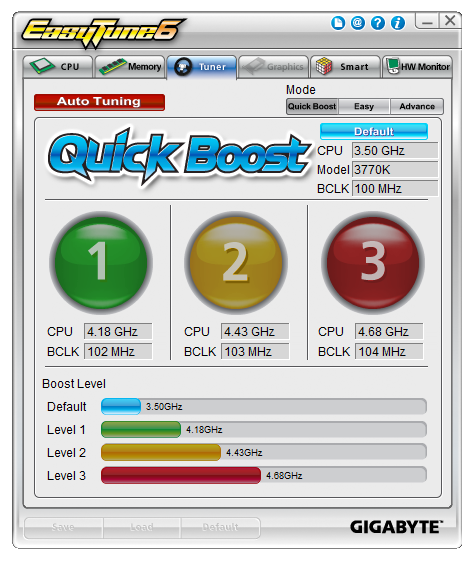
The first menu of ET6 takes us to the Tuner menu, which offers three level of overclocks (as shown above) as well as an ‘Auto Tuning’ option. The effect of these buttons is described in our overclocking section for this motherboard. Under the ‘Easy’ and ‘Advance’ options in the top right of the Tuner tab, we can explore the multiplier and voltage adjustments that ET6 allows:
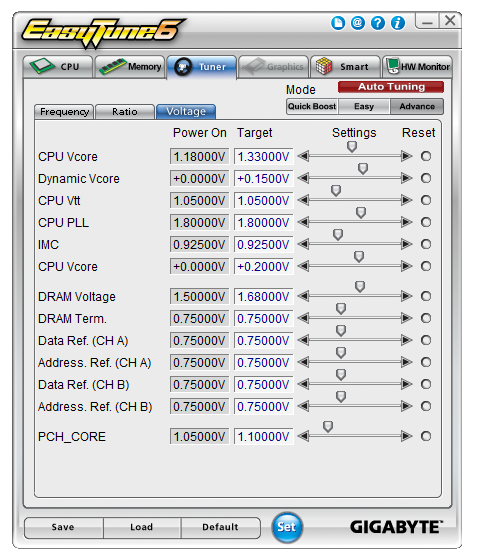
The main take-home point of ET6, apart from the fact that it is starting to look a little dated as it has not changed in at least 18 months, is that the fan controls are awkward compared to those provided by other manufacturers.
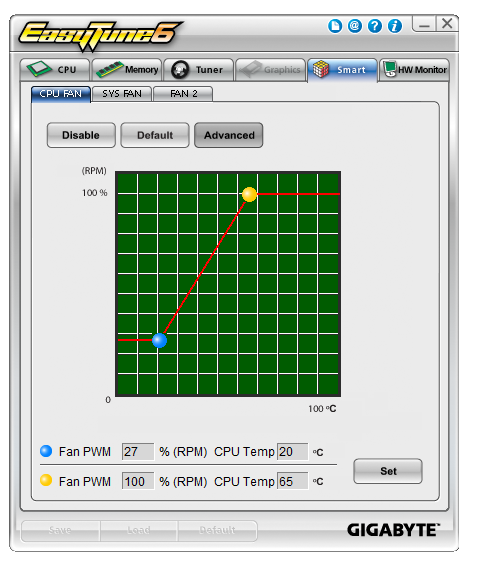
Users can set the CPU fan, the System fans, or the second series of fans as part of three different series each with their own ramp from a low speed to a high speed. These fan controls are easier to digest than those found in the BIOS, but Gigabyte needs to invest a bit more into their fan controllers and also the software that comes with controlling them.
It is also worth pointing out that ET6 still has the issue plaguing our Deferred Procedure Call testing, which determines how smoothly the processor goes through requests. Due to the monitoring software of ET6, every few seconds it causes the DPC to rise to 20 times its normal value. This can have serious effects in audio processing, introducing offsets of a couple of milliseconds. This situation can be avoided by turning off the ET6 software.
Qualcomm Atheros Killer Network Manager
As the Gigabyte G1.Sniper 3 comes with a Killer NIC onboard, there is also software designed to help manage this functionality. The Killer NIC is designed to prioritize certain kinds of traffic over others as well as reduce CPU usage, such that playing video games either at a LAN or on the internet is not disturbed by the network interface. This system is a combination of hardware and software, and the software allows for that priority configuration to be manipulated.
Users will notice a new icon in their task bar when the software is installed, which will bring up the following ‘Overview’ screen of the software:
The software gives a good overview of the system being used, but the crucial options are found in the applications menu.
This allows users to see all the programs that request network services, and then give them a rating to indicate which ones have priority. For most gamers, this puts the game and any VOIP at the top priority, and everything else at the lowest. If the lowest priority programs request more networking resources when the priority programs require them, then the low priority requests are throttled. Users can also monitor the data through the network port though this tool.
SoundBlaster THX TruStudio
Similar to the software management of the Killer NIC, the Creative audio chip on board has its own set of software utilities to manage the sound delivery on the motherboard. The software comes in the form of SoundBlaster THX TruStudio, and offers customization of all the audio ports in terms to an equalizer, setup, and enhanced voice controls. As part of this package, there is also proprietary post-audio processing technology to enhance audio related to in-game footsteps, to help determine when that enemy is creeping up behind you.
@BIOS
Users have two options to update the BIOS on a Gigabyte motherboard – if you have access to the internet via another computer and a USB stick, the BIOS can be updated through the BIOS itself and the Q-Flash utility. If that is not available (or the new BIOS is sufficiently different such that Q-Flash does not recognize the new BIOS), then in the operating system @BIOS can be used. The @BIOS system can check the Gigabyte servers for the latest BIOS for the motherboard and download it appropriately.
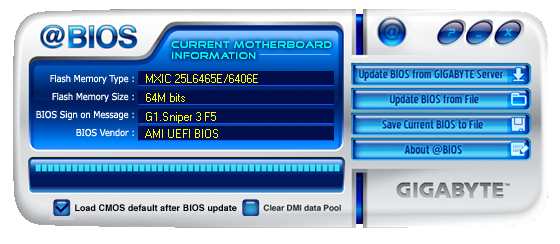
Gigabyte TweakLauncher (GBTL)
One relatively new bit of software to be released alongside Z77 motherboards is the Gigabyte TweakLauncher. This software is designed for competitive overclocking rather than any other overclocking, as it takes the entire GUI out of the overclock options in ET6 and gives the user the bare basics to give on-the-fly adjustments. This software is not available on the CD, but only through a download on the Gigabyte website.
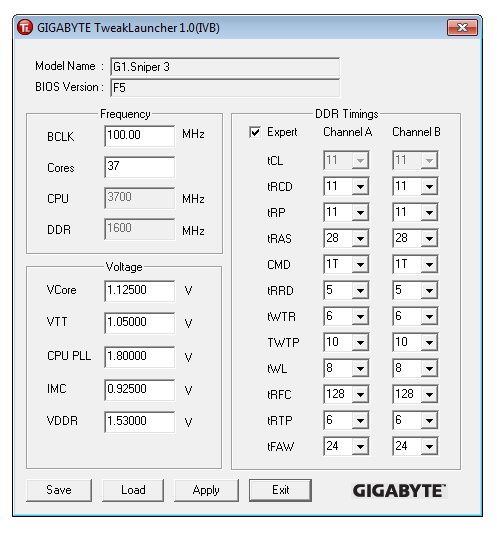


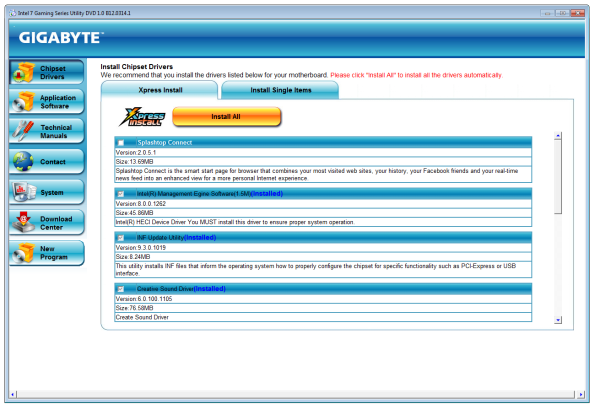
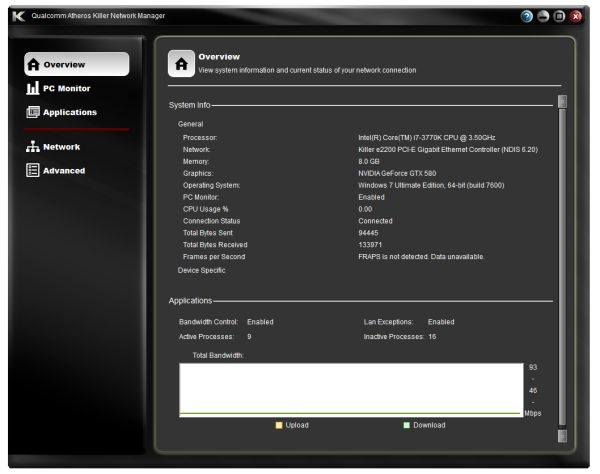
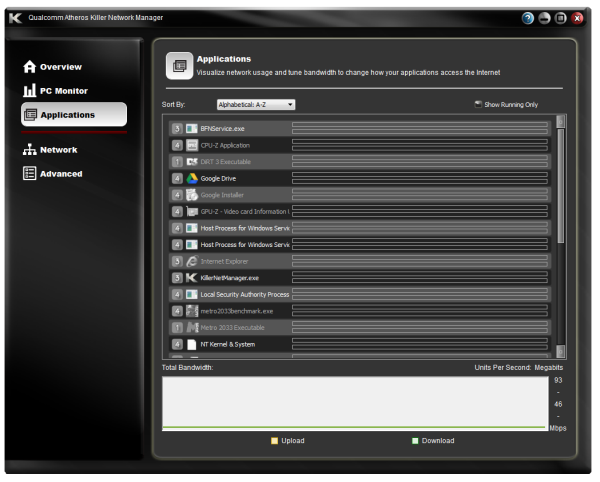
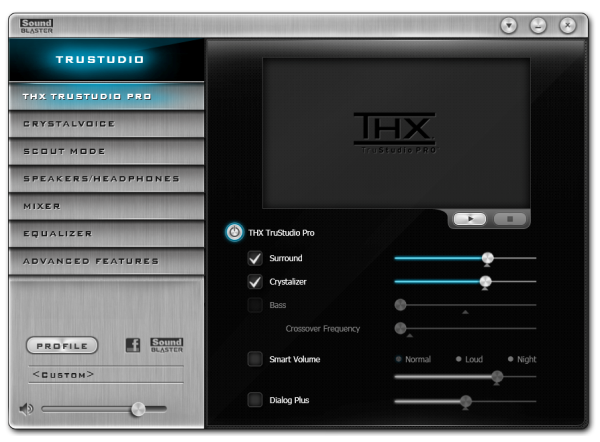
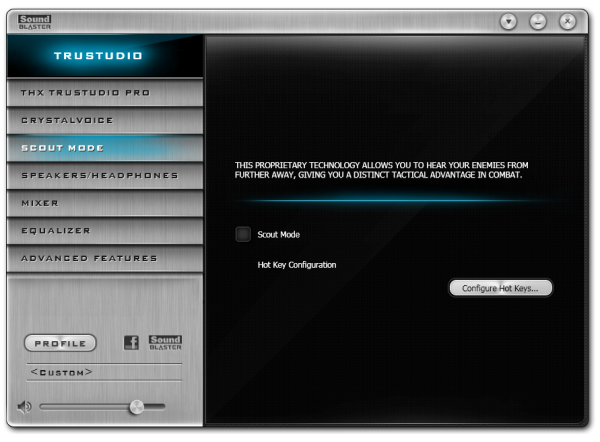














24 Comments
View All Comments
ultimatex - Wednesday, August 22, 2012 - link
I got this MOBO from Newegg the first day they had it available , I couldn't believe the price since it offered 8x8x8x8x , Picked it up the first day and havent looked back. Doesnt look as cool as the Asrock extreme9 but it still looks good. Awesome Job Gygabyte , Anandtech should have given them a Gold not bronze though since the fan issue is a minor issue.Arbie - Wednesday, August 22, 2012 - link
For gaming, at least, how many people are really going to build a 2xGPU system? Let alone 3x or 4x. The are so few PC games that can use anything more than one strong card AND are worth playing for more than 10 minutes. I actually don't know of any such games, but tastes differ. And some folks will have multi-monitor setups, and possibly need two cards. But overall I'd think the target audience for these mobos is extremely small.Maybe for scientific computing?
Belard - Wednesday, August 22, 2012 - link
Yep.... considering that most AAA PC games are just ports from consoles... having 3-4 GPUs is pointless. The returns get worse after the first 2 cards.Only those with 2~6 monitors can benefit with 2-3 cards.
Also, even $80 Gigabyte boards will do 8x x 8x SLI/CF just fine.
But hey, someone wants to spend $300 on a board... more power to them.
cmdrdredd - Wednesday, August 22, 2012 - link
"Only those with 2~6 monitors can benefit with 2-3 cards."Oh really? 2560x1440 on a single card is garbage in my view. I am not happy with 50fps average.
rarson - Wednesday, August 22, 2012 - link
If you're going multi-GPU on a single monitor, you're wasting money.Sabresiberian - Wednesday, August 22, 2012 - link
Because everyone should build to your standards, O god of all things computer.Do some reading; get a clue.
Steveymoo - Thursday, August 23, 2012 - link
Incorrect.If you have a 120hz monitor, 2 GPUs make a tonne of difference. Before you come back with a "no one can see 120hz" jibe. That is also incorrect.... My eyes have orgasms every once in a while when you get those ultra detail 100+ fps moments in battlefield, that look great!
von Krupp - Friday, August 24, 2012 - link
No. Metro 2033 is not happy at 2560x1440 with just a single HD 7970, and neither are Battlefield 3 or Crysis. The Total War series also crawls at maximum settings.I bought the U2711 specifically to take advantage of two cards (and for accurate colours, mind you). I have a distaste for multi-monitor gaming and will continue to have such as long as they keep making bezels on monitors.
So please, don't go claiming that multi-card is useless on a single monitor because that just isn't true.
swing848 - Monday, December 8, 2014 - link
At this date, December 2014, with maximum eye candy turned on, there are games that drop a refrence AMD R9 290 below 60 fps on a single monitor at 1920x1080 [using an Intel i5-3570K at 4GHz to 4.2GHz]Sabresiberian - Wednesday, August 22, 2012 - link
This is not 1998, there are many games built for the PC only, and even previously console-oriented publishers aren't just making ports for the PC, they are developing their games to take advantage of the goodness only PCs can bring to the table. Despite what console fanboys continue to spew, PC gaming is on the rise, and console gaming is on the relative decline.